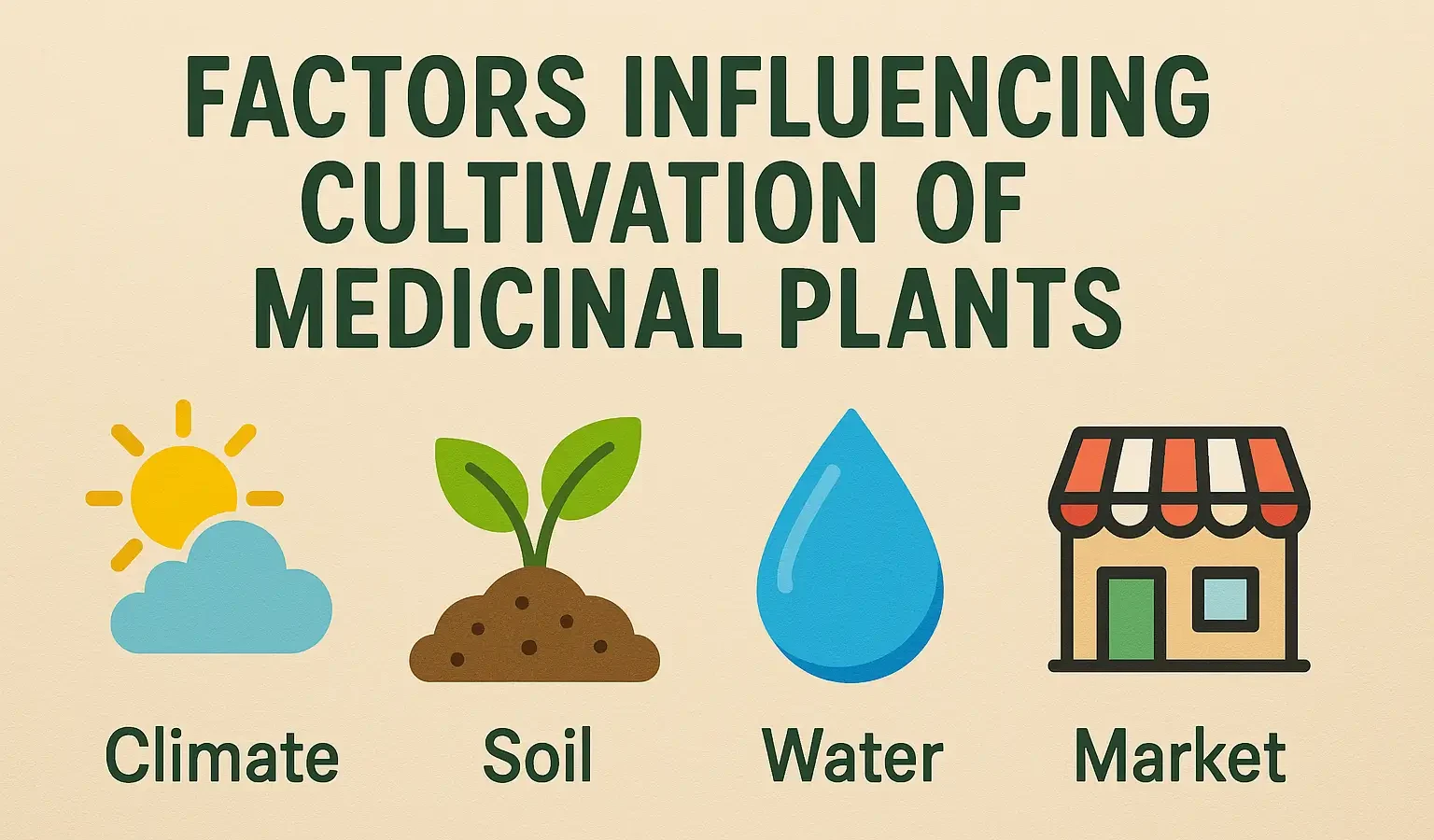- Factors Influencing Cultivation of Medicinal Plants include soil, climate, water, and light conditions.
- Factors Influencing Cultivation of Medicinal Plants impact yield, quality, and active constituent content.
- Cultivation of medicinal plants is also influenced by several environmental, biological, and agricultural factors that impact growth, yield, and the quality of bioactive compounds.
-
Environmental Factors
- Climate – Temperature, rainfall, humidity, and sunlight affect growth (Aloe vera thrives in warm, dry climates).
- Soil – Well-drained, nutrient-rich soil enhances potency (Ashwagandha prefers sandy loam soil).
- Water Availability – Proper irrigation prevents drought or root rot (Mint requires frequent watering).
- Altitude & Geography – Some plants grow best at specific elevations (Digitalis purpurea thrives in high-altitude areas).
-
Biological Factors
- Plant Species & Variety – Different species require different growth conditions.
- Pest & Disease Resistance – Affects yield and quality (Neem is naturally pest-resistant).
- Pollination & Propagation – Some plants need specific pollinators (Vanilla requires hand pollination).
-
Agronomic Factors
- Propagation Method – Sexual (seeds) or asexual (cuttings, grafting) propagation affects growth.
- Crop Management – Includes weeding, pruning, and intercropping for better yield.
- Harvesting Time & Techniques – Proper timing ensures potency (Senna leaves are collected before flowering).
-
Economic & Market Factors
- Demand & Market Value – High-demand plants encourage large-scale farming (Turmeric, Ginseng).
- Cost of Cultivation – Expenses for land, labor, and fertilizers impact profitability.
- Government Policies & Support – Regulations, subsidies, and conservation laws affect production (CITES restricts trade of endangered plants).
Click Here to Watch the Best Pharma Videos

